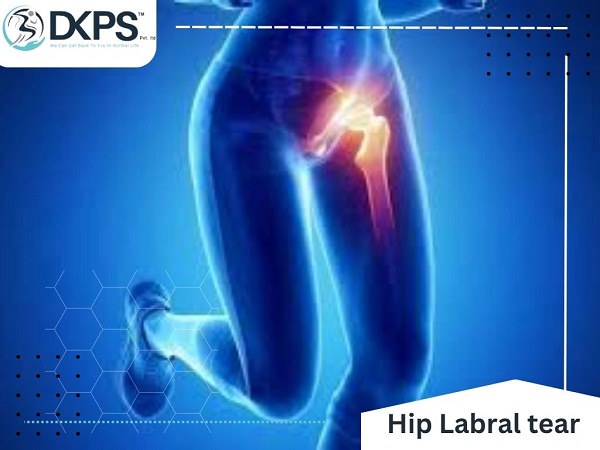- Home
- About Us
- DKPS Dealing
- BLOG
- Delhi NCR
- Delhi
- Physiotherapy at Home Near Me | Physiotherapist in South Delhi
- Best Chiropractor in Delhi
- Physiotherapist in Delhi
- Cupping Therapy in Delhi
- Home Nursing Services in Delhi
- Needle Therapy for Back Pain
- Sports Injury Physiotherapy
- Best Physiotherapist Visit at Home in Rohini Sector 24
- Physiotherapy at Home In Rohini Sector 9 |
- Physiotherapist in Pitampura | Physiotherapy at Home in Pitampura
- Physiotherapy at home in Rohini sector 29
- Physiotherapist in Paschim Vihar
- Physio home visit | Home Visit Physiotherapy |
- Physiotherapist in Saket | Best Physiotherapist in Saket |
- Physiotherapist In Janakpuri | Best Physiotherapist in Janakpuri |
- Best Physiotherapist in Punjabi Bagh | Punjabi Bagh Physiotherapist |
- Best Physiotherapist Service at Home in Dwarka, Delhi
- Best Physiotherapist in Chandigarh at Home Visit
- Faridabad
- Gurugram
- Noida
- Best Physiotherapy Gorakhpur
- Best Physiotherapist in Lucknow | Physiotherapist in Lucknow near me |
- Delhi
- Mumbai
- Delhi NCR
- Department
- Doctors
- Gallery
- Packages
- Contact Us
- Home
- About Us
- DKPS Dealing
- BLOG
- Delhi NCR
- Delhi
- Physiotherapy at Home Near Me | Physiotherapist in South Delhi
- Best Chiropractor in Delhi
- Physiotherapist in Delhi
- Cupping Therapy in Delhi
- Home Nursing Services in Delhi
- Needle Therapy for Back Pain
- Sports Injury Physiotherapy
- Best Physiotherapist Visit at Home in Rohini Sector 24
- Physiotherapy at Home In Rohini Sector 9 |
- Physiotherapist in Pitampura | Physiotherapy at Home in Pitampura
- Physiotherapy at home in Rohini sector 29
- Physiotherapist in Paschim Vihar
- Physio home visit | Home Visit Physiotherapy |
- Physiotherapist in Saket | Best Physiotherapist in Saket |
- Physiotherapist In Janakpuri | Best Physiotherapist in Janakpuri |
- Best Physiotherapist in Punjabi Bagh | Punjabi Bagh Physiotherapist |
- Best Physiotherapist Service at Home in Dwarka, Delhi
- Best Physiotherapist in Chandigarh at Home Visit
- Faridabad
- Gurugram
- Noida
- Best Physiotherapy Gorakhpur
- Best Physiotherapist in Lucknow | Physiotherapist in Lucknow near me |
- Delhi
- Mumbai
- Delhi NCR
- Department
- Doctors
- Gallery
- Packages
- Contact Us
Hip Labral Tear
- Home
- Hip Labral Tear

Hip Labral Tear
Hip Labral Tear: Causes, Symptoms, Diagnosis, and Treatment
The hip joint is a complex ball-and-socket joint that allows for smooth movement and stability in the lower body. It is made up of the acetabulum (socket) and the femoral head (ball), which are covered by cartilage and connected by the labrum, a ring of cartilage that lines the rim of the acetabulum. The labrum serves as a cushion and provides stability to the hip joint. However, like other parts of the body, the labrum can be subject to injury, leading to a condition known as a hip labral tear.
A hip labral tear is a common injury that can occur in athletes, particularly those who engage in activities that involve repetitive hip movements, such as twisting, pivoting, or sudden changes in direction. It can also occur as a result of trauma, such as a fall or a direct blow to the hip. In this article, we will explore the causes, symptoms, diagnosis, and treatment options for hip labral tears.
Causes of Hip Labral Tear
There are several potential causes of hip labral tears. Some of the common causes include:
Repetitive Hip Movements: Athletes who engage in sports that require repetitive hip movements, such as soccer, ice hockey, ballet, or gymnastics, are at an increased risk of developing hip labral tears. These movements can cause wear and tear on the labrum, leading to tears over time.
Trauma: A direct blow to the hip, such as from a fall or an impact during a car accident, can also cause a hip labral tear. The force of the impact can tear the labrum or cause it to detach from the acetabulum.
Structural Abnormalities: Some individuals may be born with structural abnormalities of the hip joint, such as hip dysplasia or a shallow acetabulum, which can increase the risk of developing hip labral tears.
Degenerative Changes: As individuals age, the labrum may become more susceptible to degenerative changes, such as fraying or thinning, which can increase the risk of hip labral tears.
Symptoms of Hip Labral Tear
The symptoms of a hip labral tear can vary depending on the severity and location of the tear. Some common symptoms include:
Pain: Pain is the most common symptom of a hip labral tear. The pain is typically felt in the groin area, but it can also be felt in the hip, lower back, or buttocks. The pain may be sharp or dull and may worsen with hip movements or prolonged sitting or standing.
Clicking or Catching Sensation: Some individuals with hip labral tears may experience a clicking or catching sensation in the hip joint. This can occur when the torn labrum gets caught between the acetabulum and the femoral head during hip movements.
Limited Range of Motion: A hip labral tear can also result in a limited range of motion in the hip joint. Activities that require hip movements, such as bending, twisting, or squatting, may be difficult or painful to perform.
Instability: In some cases, a hip labral tear can cause a feeling of instability in the hip joint. The hip may feel like it is giving out or buckling, and individuals may experience difficulty with balance or coordination.
Diagnosis of Hip Labral Tear
Diagnosing a hip labral tear typically involves a thorough evaluation of the patient’s medical history, physical examination, and imaging studies. The following methods are commonly used in the diagnosis of hip labral tears:
Medical History: The doctor will take a detailed medical history, including any history of trauma, repetitive hip movements, or previous hip injuries. They will also inquire about the nature and duration of the symptoms, such as pain, clicking, catching, or instability.
Physical Examination: The doctor will perform a physical examination of the hip joint to assess for any signs of tenderness, swelling, or instability. They may also perform specific tests to reproduce the symptoms, such as the hip impingement test or the flexion-abduction-external rotation (FADIR) test, which can help to identify a possible labral tear.
Imaging Studies: Imaging studies, such as X-rays, magnetic resonance imaging (MRI), or computed tomography (CT) scans, may be ordered to further evaluate the hip joint. X-rays can help to rule out other conditions, such as fractures or arthritis. At the same time, MRI or CT scans can provide detailed images of the labrum and other soft tissues in the hip joint, allowing for a more accurate diagnosis of a labral tear.
Diagnostic Hip Arthroscopy: In some cases, diagnostic hip arthroscopy may be performed to directly visualize the hip joint and confirm the presence of a labral tear. During this minimally invasive procedure, a small camera is inserted into the hip joint through small incisions, allowing the surgeon to visualize the labrum and other structures in the hip joint and assess for any tears or damage.
Treatment of Hip Labral Tear
The treatment options for hip labral tears depend on the severity of the tear, the patient’s age, activity level, and overall health. The goal of treatment is to relieve pain, improve hip joint function, and prevent further damage. Some common treatment options for hip labral tears include:
Conservative Management: Conservative management may be recommended for mild hip labral tears or for patients who are not suitable candidates for surgery. This may include rest, physical therapy, nonsteroidal anti-inflammatory drugs (NSAIDs), and modifications to activities or sports that exacerbate the symptoms. Physical therapy may focus on strengthening the hip muscles, improving hip joint stability, and optimizing hip biomechanics to reduce stress on the labrum.
Medications: Pain medications, such as NSAIDs, may be prescribed to help manage pain and reduce inflammation associated with a hip labral tear. However, long-term use of NSAIDs should be monitored by a healthcare professional due to potential side effects.
Hip Joint Injections: Corticosteroid injections or other types of hip joint injections may be used to provide temporary relief from pain and inflammation associated with a hip labral tear. These injections are typically performed under the guidance of imaging, such as ultrasound or fluoroscopy, to ensure accurate placement of the medication.
Rehabilitation Exercises: Specific rehabilitation exercises may be prescribed to improve hip joint stability, flexibility, and muscle strength. These exercises may be tailored to the patient’s individual needs and may be performed under the guidance of a physical therapist.
Surgical Intervention: In cases where conservative management fails to provide adequate relief or for more severe hip labral tears, surgical intervention may be necessary. Hip arthroscopy is the most common surgical approach for treating hip labral tears. During hip arthroscopy, the surgeon uses small incisions and a camera to visualize and repair the torn labrum. In some cases, the torn labrum may be debrided or removed, while in others, it may be repaired using sutures or anchors.
Rehabilitation After Surgery: Following surgical intervention, a comprehensive rehabilitation program is typically prescribed to facilitate healing and recovery. This may include a gradual progression of weight-bearing activities, hip joint mobility exercises, strengthening exercises, and functional activities to help the patient regain normal hip joint function and return to their desired level of activity.
Conclusion
A hip labral tear is a common injury that can cause significant pain and functional limitations in the hip joint. It can result from various causes, including trauma, repetitive motion, structural abnormalities, or degenerative changes. Timely and accurate diagnosis is crucial for the effective management of hip labral tears.
Conservative management, including rest, physical therapy, medications, and activity modification, may be sufficient for mild cases or for patients who are not suitable candidates for surgery. However, in more severe cases, surgical intervention, such as hip arthroscopy, may be necessary to repair or remove the torn labrum. Rehabilitation plays a key role in the recovery process after surgery, helping patients regain normal hip joint function and return to their desired level of activity.
It’s important for patients to work closely with their healthcare team, including orthopedic specialists, physical therapists, and other healthcare professionals, to ensure a tailored treatment plan that meets their individual needs. Compliance with rehabilitation exercises, activity modification, and other recommendations from healthcare professionals is crucial for optimal outcomes.
Prevention of hip labral tears may be possible through proper biomechanics, avoiding repetitive stress on the hip joint, and addressing structural abnormalities or hip impingement early on. It’s crucial for athletes and individuals involved in high-impact sports or activities to pay attention to proper form and technique, use appropriate equipment, and listen to their bodies to avoid overuse injuries.
In conclusion, a hip labral tear is a common injury that can cause significant pain and functional limitations in the hip joint. Timely and accurate diagnosis, followed by appropriate conservative management or surgical intervention and comprehensive rehabilitation, can lead to successful outcomes for patients. Prevention strategies should also be considered to minimize the risk of hip labral tears. If you suspect you may have a hip labral tear or are experiencing hip pain, it’s important to consult with a qualified healthcare professional for proper evaluation, diagnosis, and management.
For More articles-
https://drsinghphysiocare.com/patella-discolation/
https://drsinghphysiocare.com/best-physiotherapist-in-mumbai/
https://drsinghphysiocare.com/best-physiotherapist-in-delhi-ncr/
